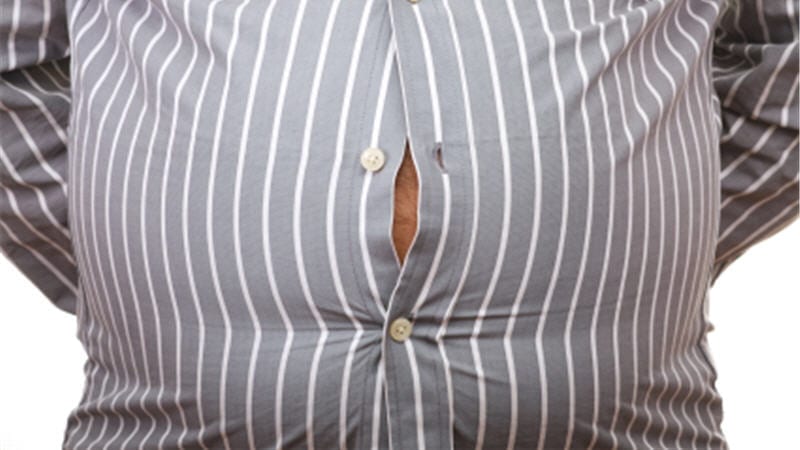Exercise Guidelines for the Diabetic
 If you have type 2 diabetes mellitus (T2DM), regular exercise and physical activity can help you control your blood glucose levels as well as improve your cardiovascular health and reduce abdominal fat. The appropriate exercise prescription for a diabetic includes several key components: conditioning (aerobic-based exercise), strengthening, balance, and flexibility.
If you have type 2 diabetes mellitus (T2DM), regular exercise and physical activity can help you control your blood glucose levels as well as improve your cardiovascular health and reduce abdominal fat. The appropriate exercise prescription for a diabetic includes several key components: conditioning (aerobic-based exercise), strengthening, balance, and flexibility.
RELATED: Exercising with ‘Diabesity’
Blood Sugar Goals
The following values are a comparison of target blood glucose levels for diabetics and non-diabetics:
| Target Glucose Levels | |||
| Values | ADA | ACE | Non-Diabetic |
| A1C | <7% | <6.5% | <4.0-5.6% |
| Before Meals (Fasting) | 90-130 mg/dL | <110 mg/dL | <100 mg/dL |
| 1-2 hours After Meals | <180 mg/dL | <140 mg/dL | <140 mg dL |
ADA – American Diabetes Association
ACE – American College of Endocrinology
Hemoglobin A1c levels of 6.5% or higher means you have diabetes. The higher the HbA1c increases risk of complications related to diabetes.
- Diabetic: If your HbA1c value is 14%, your Estimated Average Glucose (eAG) level was 355 mg/dL over the previous two to three months.
- Diabetic: If your HbA1c value is 8%, your Estimated Average Glucose (eAG) level was 183 mg/dL over the previous two to three months.
- Diabetic: If your HbA1c value is 7%, your Estimated Average Glucose (eAG) level was 154 mg/dL over the previous two to three months.
- Diabetic: If your HbA1c value is 6.5%, your Estimated Average Glucose (eAG) level was 140 mg/dL over the previous two to three months.
- Pre-diabetic: HbA1c values range from 5.7% (eAG = 126 mg/dL) to 6.4% (eAG = 151 mg/dL). If pre-diabetes is left untreated, it often develops into type 2 diabetes within five years.
- Normal: HbA1c values range from 4.0% (eAG = 68 mg/dL) to 5.6% (eAG = 114 mg/dL).
 Maintain an Exercise and Blood Glucose Log
Maintain an Exercise and Blood Glucose Log
Glucose response to exercise can fluctuate unpredictably with each exercise session just by changing exercise modes or by varying the duration or intensity of a session. By keeping a daily glucose exercise log, you can better understand how your body responds and adapts to exercise.
Blood Sugar Changes During Exercise
Depending on the intensity and duration of the exercise session, your blood glucose levels may DECREASE during and after exercise. If your blood sugar dips to <70 mg/dL, consume 20 to 30 g of carbohydrate (CHO) and test levels after five minutes. During exercise, your muscles use glucose 10-20 times faster compared to when they are inactive. As a result of exercise, your blood glucose levels may also INCREASE and here’s why.
When exercising vigorously, your body may see the additional workload as a stressor and release catecholemines, such as adrenaline. These hormones cause physiological changes that prepare the body for physical activity — a.k.a. the ‘fight or flight response’. Typically, your heart rate, blood pressure and blood glucose levels will increase. Without adequate insulin though, the glucose is unable to reach your muscles and ends up building up in your blood.
Safe Pre-Exercise Glucose Levels
- If your pre-exercise glucose is under 100 mg/dL, eat 20 to 30 g of carbohydrates BEFORE exercise. Exercise tends to accelerate lowering of blood sugar if it starts out on in the low normal range.
- If your pre-exercise glucose is 250-300 mg/dL, test your urine for ketones. If ketones are present, postpone exercise.
Quick Sugar Fixes
Here’s a sampling of foods that are easily absorbed and contain 22.5 to 30 g carbohydrate — the amount you need to raise your blood sugar quickly before exercise (if level is <100 mg/dL). Foods that contain protein and fat, such as cheese, chocolate, crackers, and cookies, will not absorb as fast.
100% Fruit Juices/Soda (22.5 to 30 g CHO)
 Apple, grapefruit, orange, or pineapple fruit juice, unsweetened: 3/4 to 1 cup
Apple, grapefruit, orange, or pineapple fruit juice, unsweetened: 3/4 to 1 cup- Cranberry, grape juice or prune: 1/2 to 2/3 cup
Fruits (22.5 to 30 g CHO)
- Apple, small: 1 1/2 to 2
- Applesauce, unsweetened: 3/4 to 1 cup
- Banana, medium: 3/4 to 1
- Blueberries/Blackberries: 1 1/8 to 1 1/2 cups
- Cantaloupe: 1 1/2 to 2 cups cubed
- Cherries: 18 to 30
- Grapes: 24 to 34
- Orange, small: 1 1/2 to 2
- Peach, small: 1 1/2 to 2
- Pear, small: 1 1/2 to 2
- Raisins: 3 tablespoons to 1/4 cup
- Strawberries, whole: 2 1/4 to 3 cups
Grains (22.5 to 30 g CHO)
- Bagel, white or whole wheat: 3/4 to 1 small
- Bread, white or whole wheat: 1 1/2 to 2 slices
Dairy Products (22.5 to 30 g CHO)
- Milk, skim or 1% fat: 1 1/2 to 2 cups
- Yogurt, plain, light or sugar-free: 1 1/2 to 2 cups
Fast-Acting Carbs (22.5 to 30 g CHO)
- Glucose tablets: 4 1/2 to 7 1/2 glucose tablets (4-5 g glucose/tablet)
- Glucose gel, tube: 1 1/2 to 2 (15 g glucose/tube)
 Sweets and Snacks (22.5 to 30 g CHO)
Sweets and Snacks (22.5 to 30 g CHO)
- Honey: 1 1/2 to 2 Tbsp
- Fruit Spread, 100% fruit: 3 to 4 Tbsp
- Pretzels: 1 1/8 to 1 1/2 oz.
- Pudding, sugar-free: 3/4 to 1 cup
- Frozen Yogurt, regular: 3/4 to 1 cup
How to Exercise with Diabetes
- Carry a glucometer with you and test before and after each exercise session.
- Inject insulin into the muscles that will be the least active, such as your abdomen instead of your legs.
- Monitor your blood glucose for several hours after your workout. Exercise affects blood glucose levels for 24 to 72 hours post-exercise.
- Hydrate before and rehydrate after each exercise session to prevent dehydration (a common occurrence of hyperglycemia).
- Don’t exercise in hot weather and in direct sunlight. Wear a hat when in the sun.
- Carry extra carbohydrates (10-15 g per 30 minutes of exercise) if needed for hypoglycemia.
Other Things to Remember
- Exercise with a partner until your exercise response is known.
- Wear proper-fitting and comfortable shoes with socks to limit injuries and irritations to your feet and lower legs.
- Inspect your feet carefully and regularly to spot sores, irritations and prevent possible infections.
 Wear a diabetes identification tag.
Wear a diabetes identification tag.
RELATED: Tips to Buying and Wearing a Medical ID
![]() Karen’s Fit Tip:To safely embark on an exercise program, it’s best to consult with a clinical exercise physiologist. Ask your physician or contact your local hospital to find one in your area. Clinical exercise physiologists specialize in the design and delivery of exercise programs as a treatment and prevention strategy for chronic diseases. An exercise prescription is an integral component of the diabetes self-management training (DSMT) plan if you have diabetes or are at risk for developing type 2 diabetes.
Karen’s Fit Tip:To safely embark on an exercise program, it’s best to consult with a clinical exercise physiologist. Ask your physician or contact your local hospital to find one in your area. Clinical exercise physiologists specialize in the design and delivery of exercise programs as a treatment and prevention strategy for chronic diseases. An exercise prescription is an integral component of the diabetes self-management training (DSMT) plan if you have diabetes or are at risk for developing type 2 diabetes.


